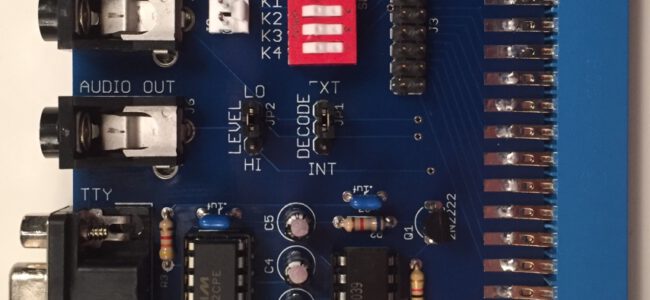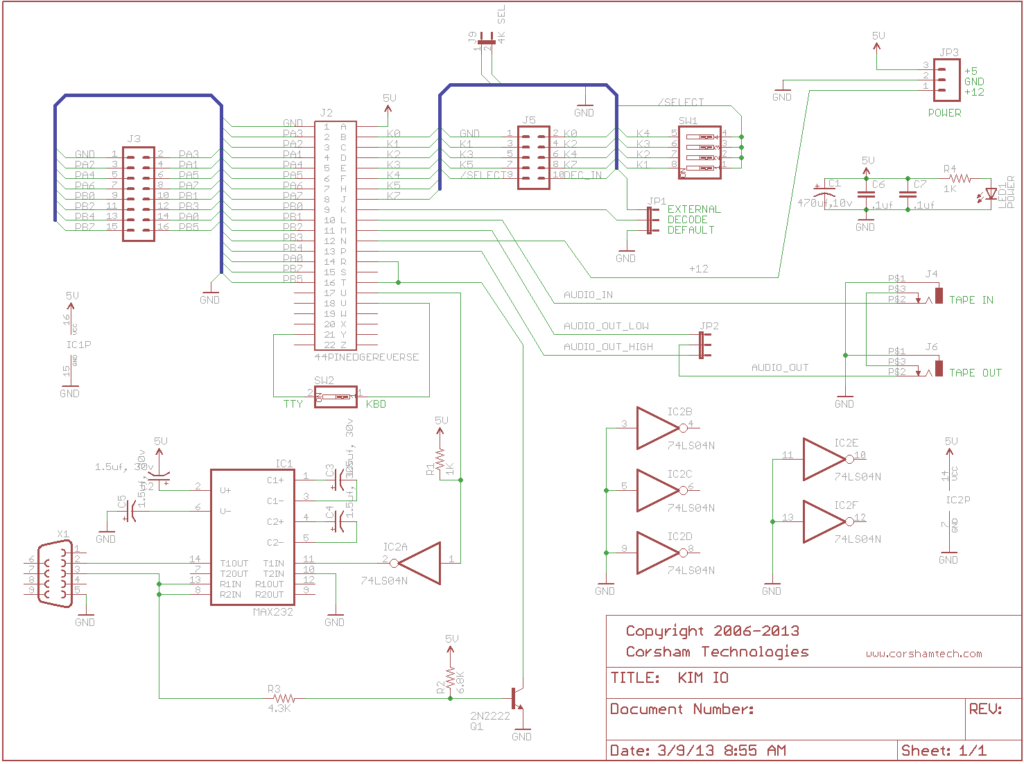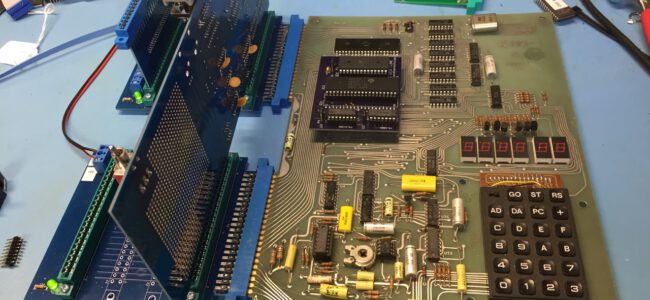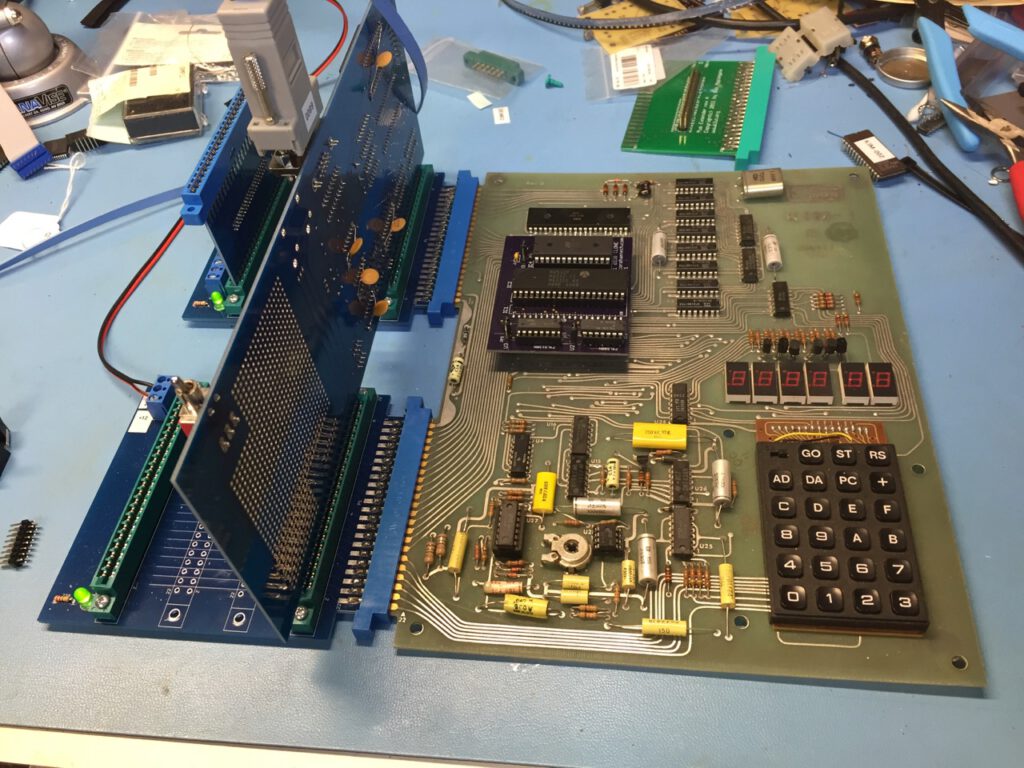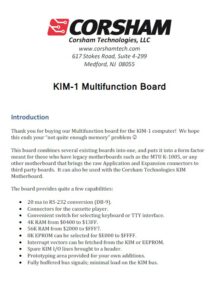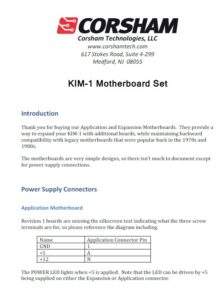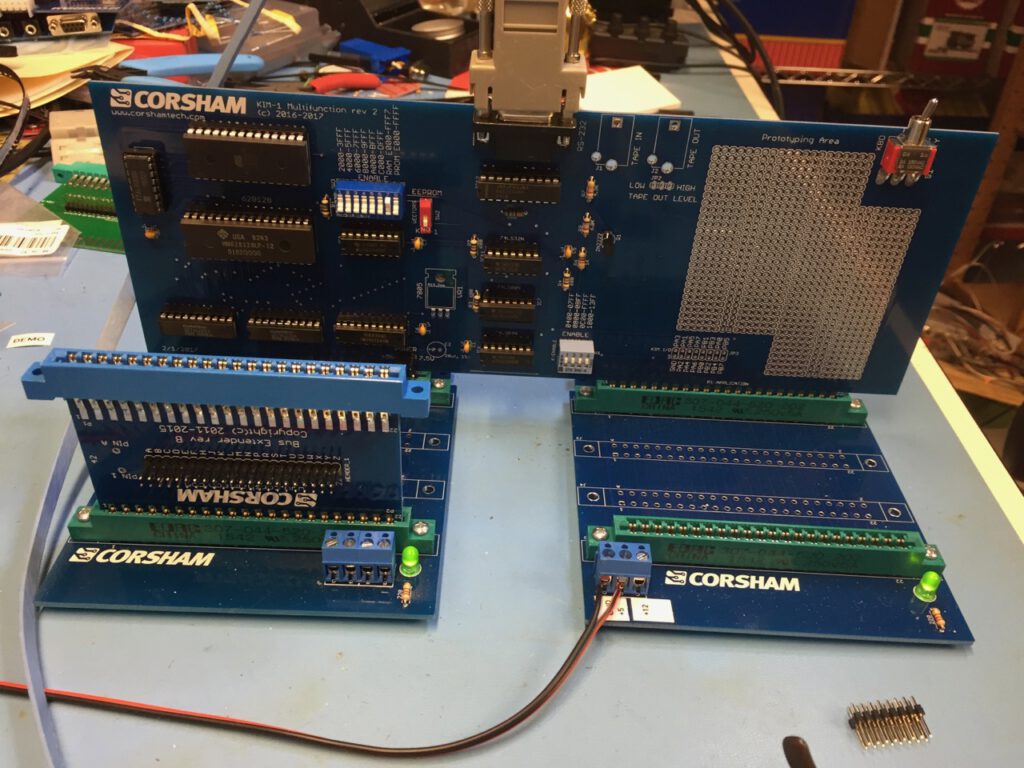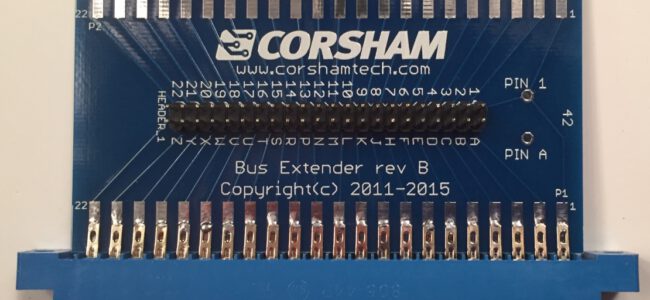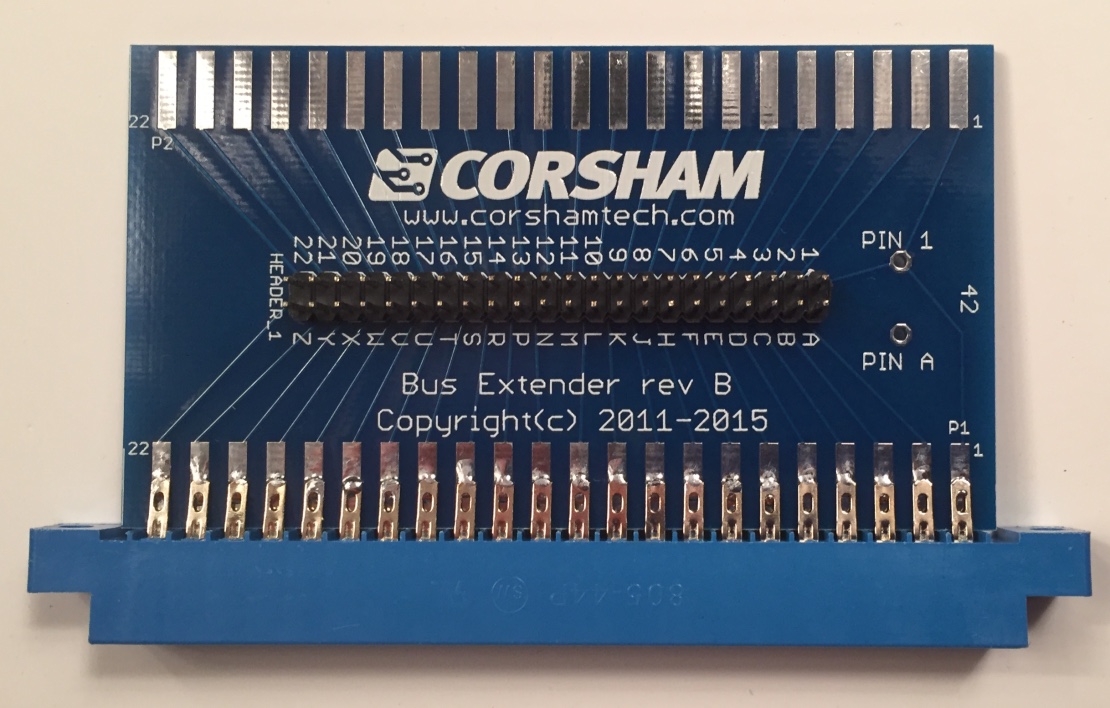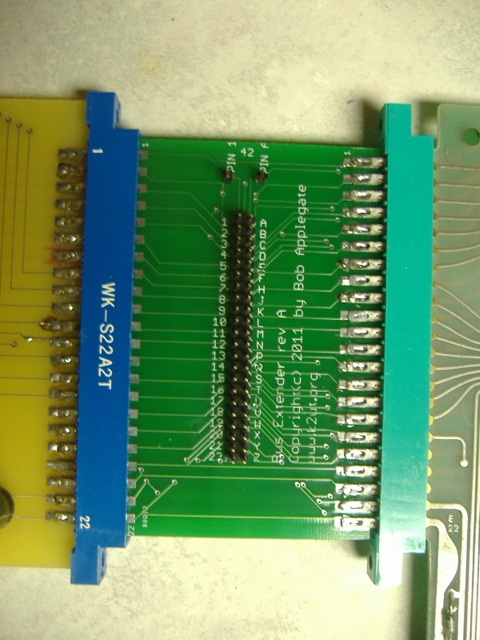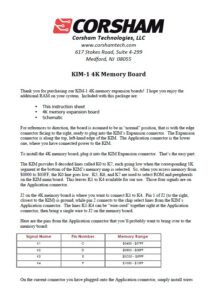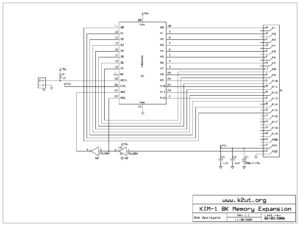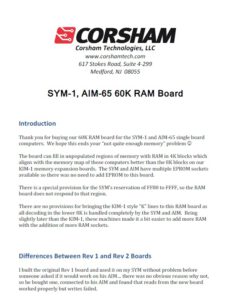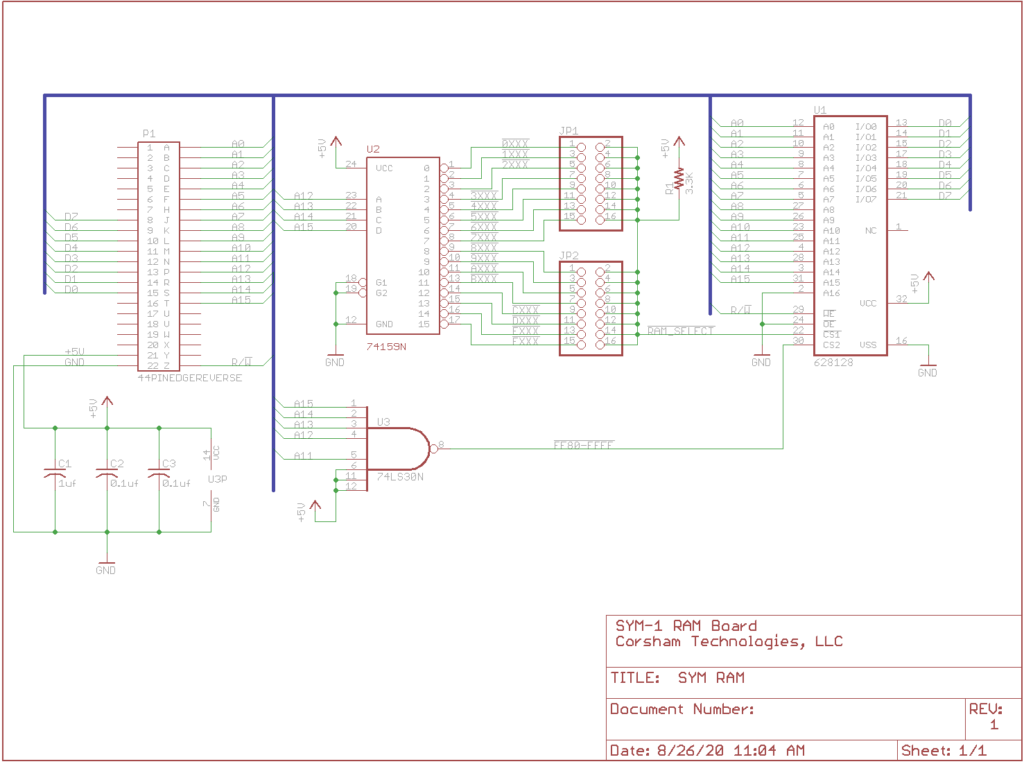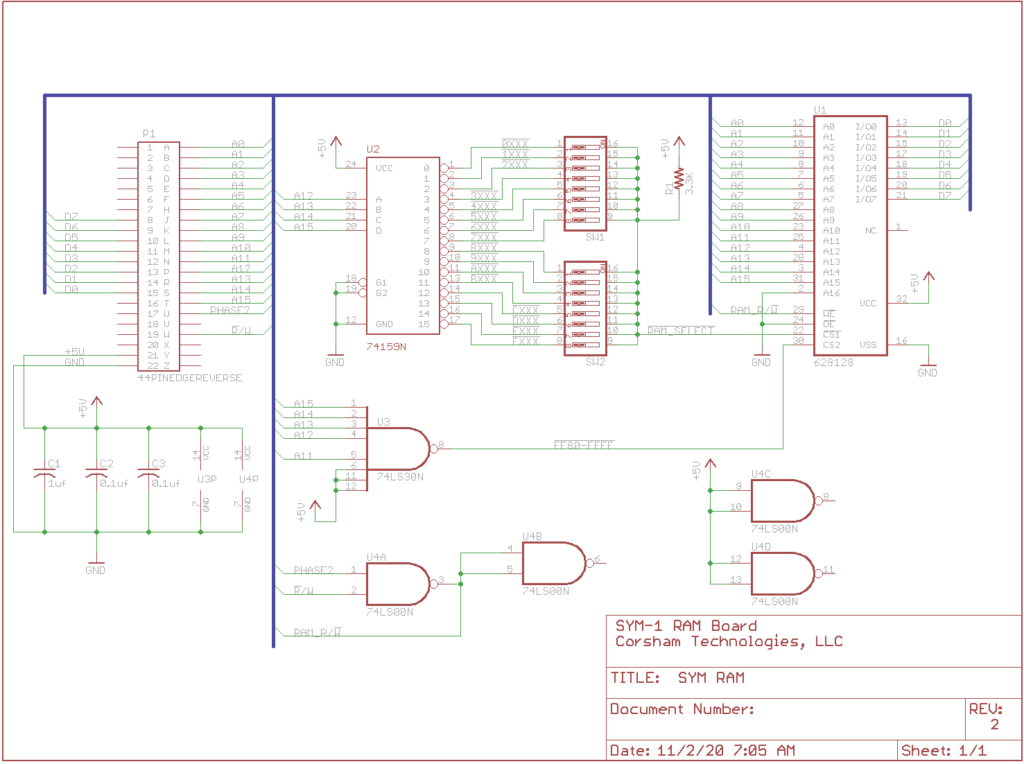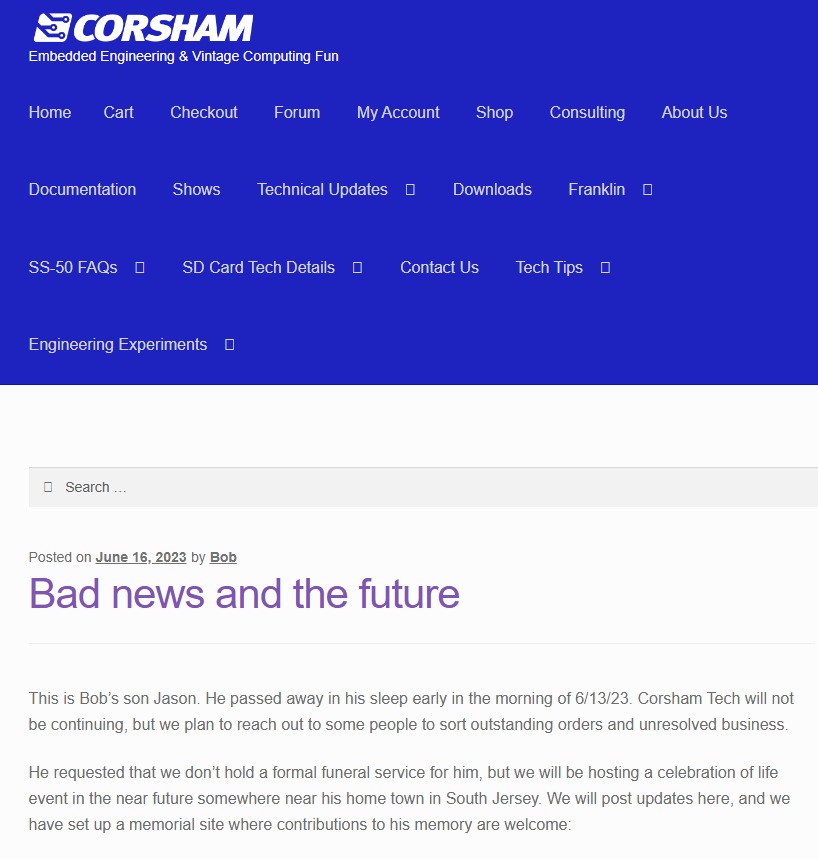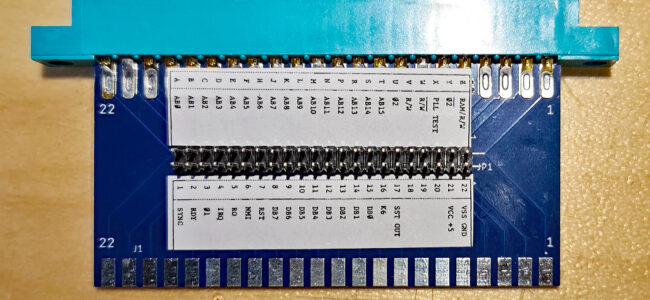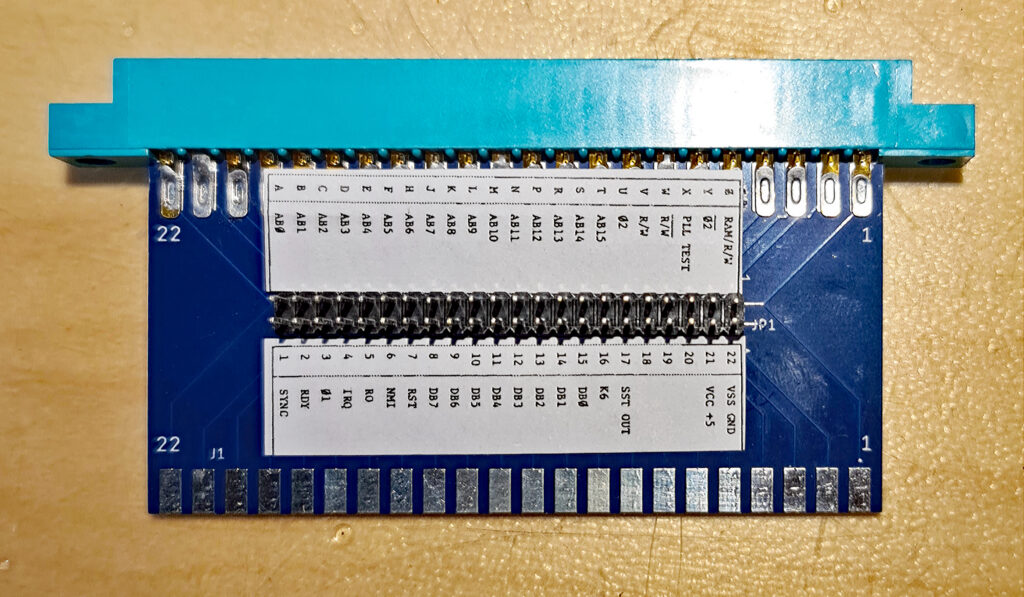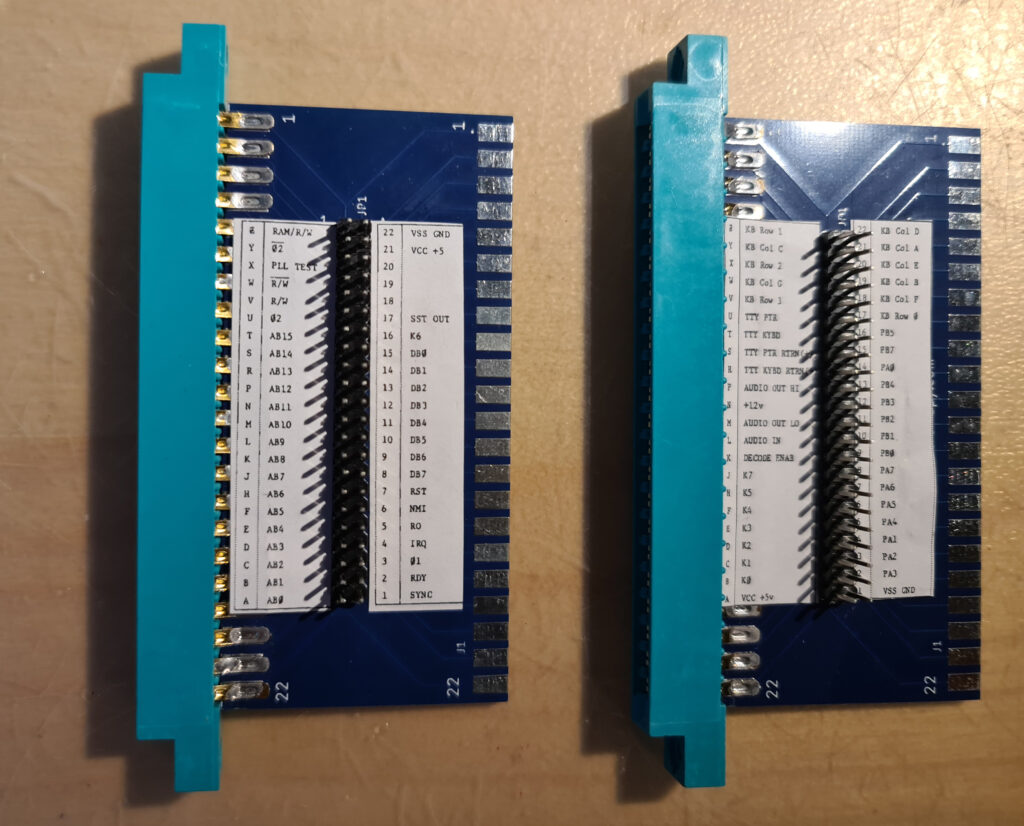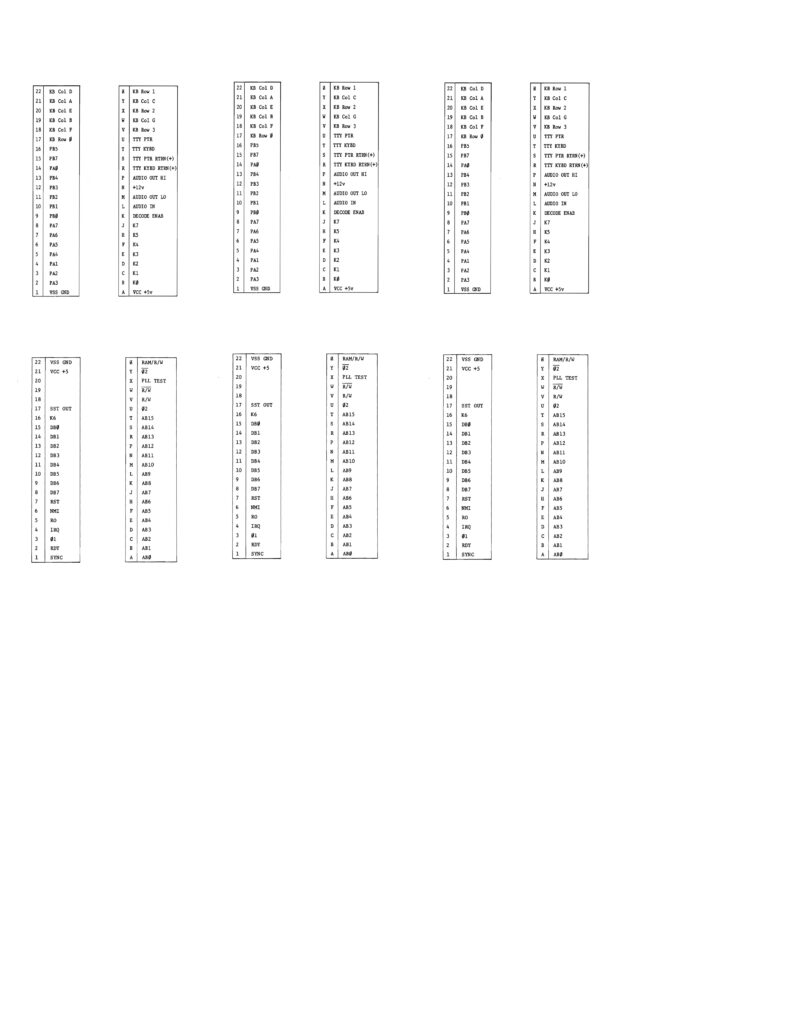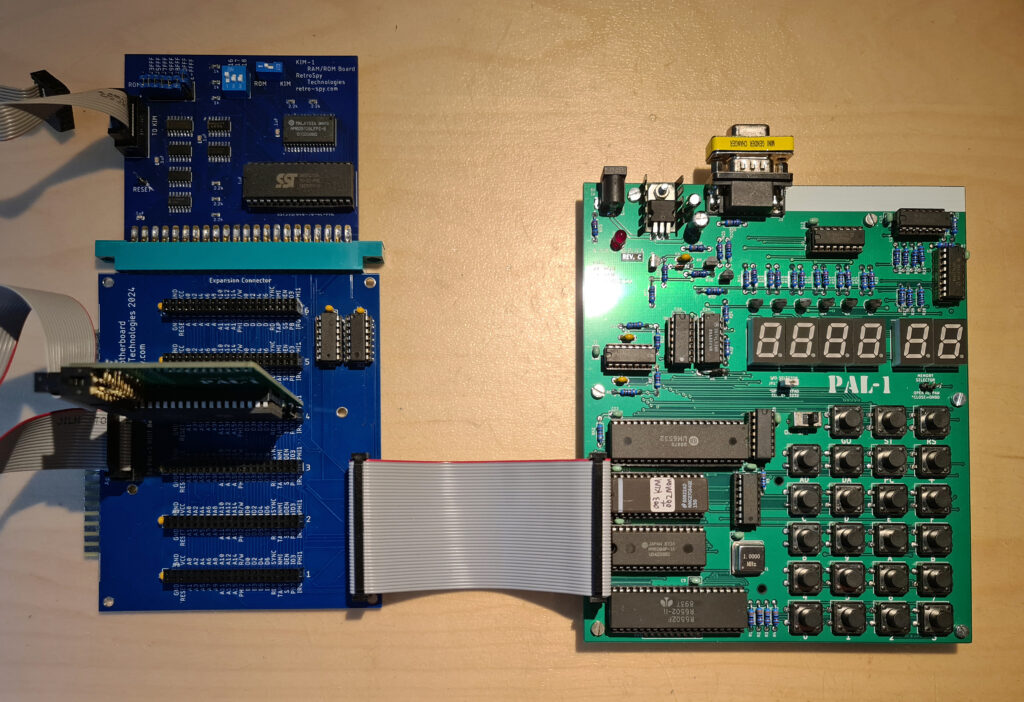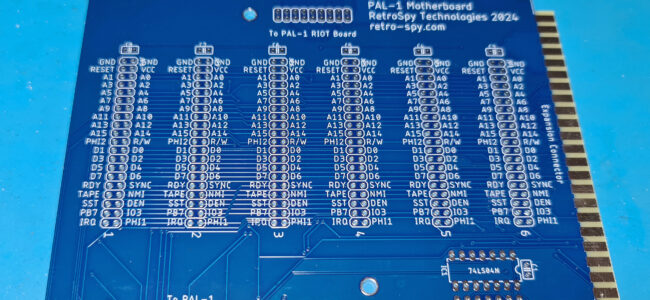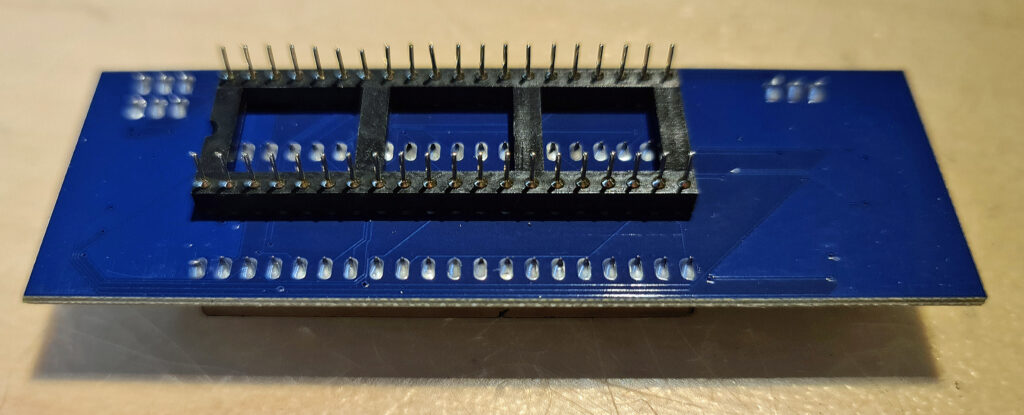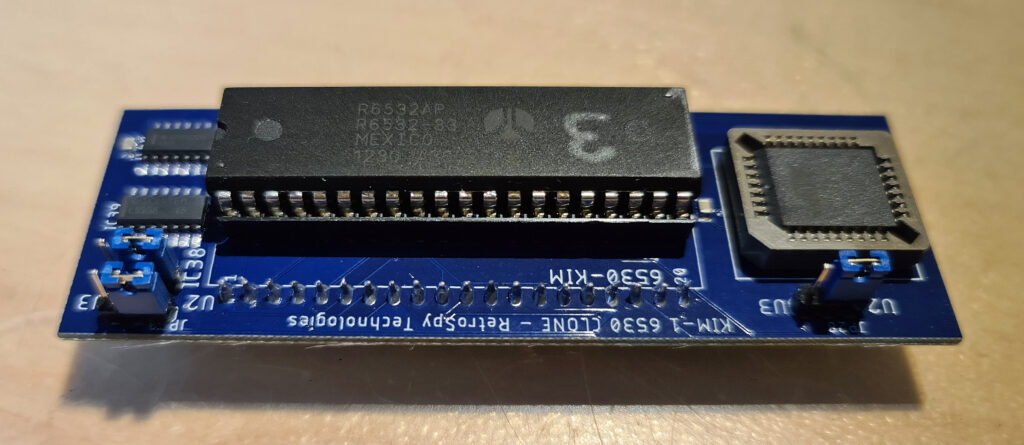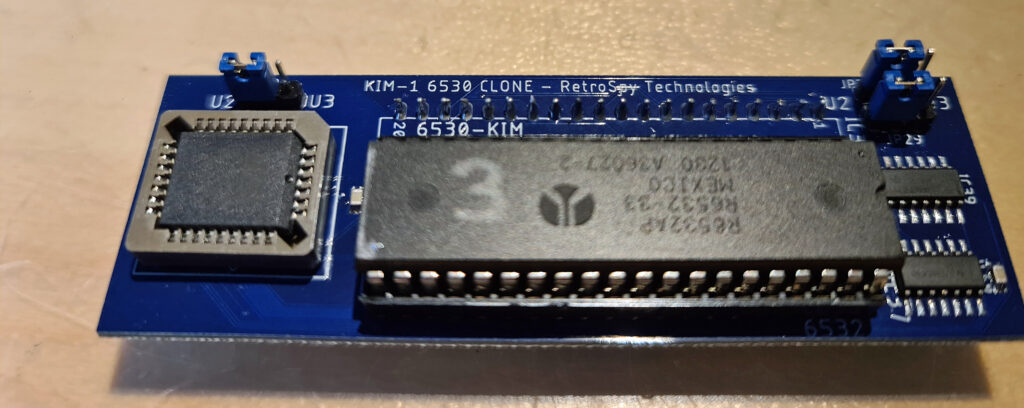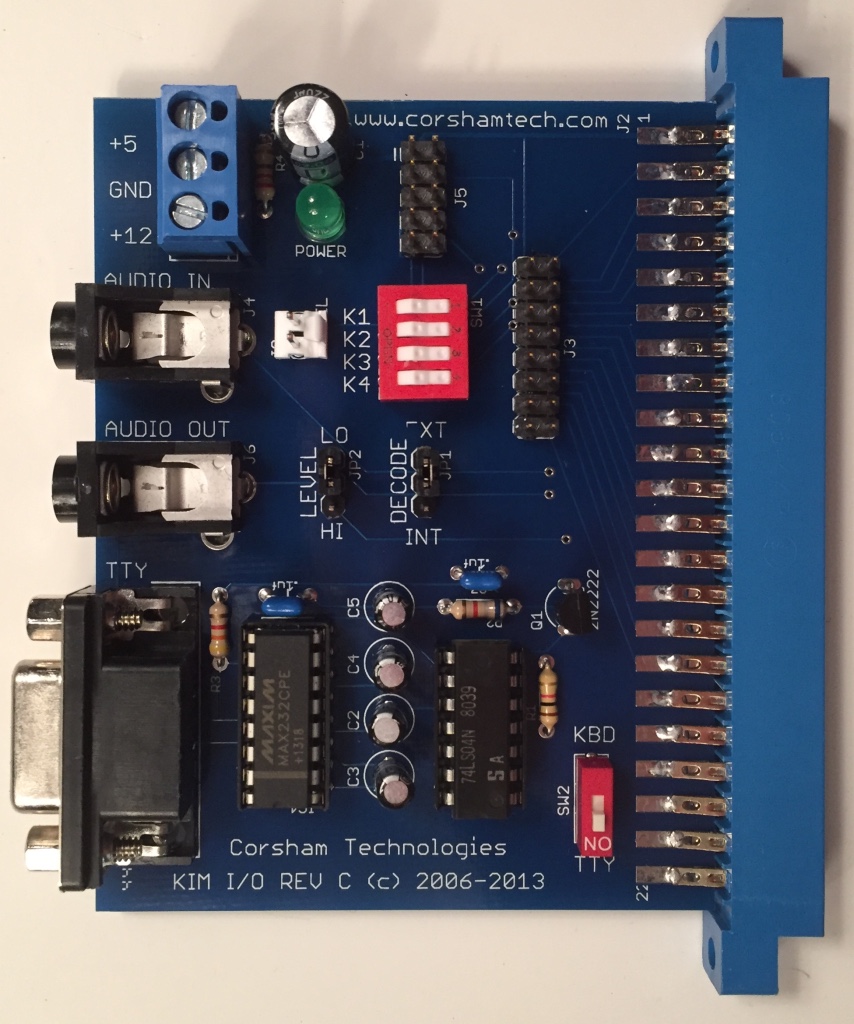
The KIM-1 Application connector has a lot of useful signals on it and our expansion board makes them easily usable, as well as providing an RS-232 interface to the KIM’s serial port. The KIM has a 20 ma loop interface because that was the standard used by mechanical teletypes commonly used as terminals in the early days of the microcomputer revolution. Now we all have RS-232 ports on our computers and our I/O board allows a modern computer to connect to the KIM.
The expander plugs into the KIM’s Application connector. The lower left hand side of the board has a DB-9 connector that mates with a standard cable to a PC serial port.
Just above the serial connector are two standard 1/8″ inch audio connectors for a tape player; some people still like saving data to tape, just like in the old days. If both cables are out then the audio in/out lines are connected; this is perfect for running PLL adjustment programs. There is a jumper to select whether to use the audio high or low connections.
Above the audio connectors is the power connector with connections for +5, +12 (only needed if the cassette interface is used) and Ground. A filter capacitor is present to keep the voltages smoothed out.
Two of the best additions to this board are the POWER LED and KBD/TTY switch. A few people, myself included, have almost pulled board or made other changes while power was on. The handy LED provides an indication that 5 volts is present.
If you’re switching back and forth between the normal KIM KBD operation and using an external TTY device, there is now a small switch located on the board that is clearly labeled as to which position is for KBD and which is TTY.
There are various connectors and a set of switches provided for feeding the K1-K4 lines to an external memory board, such as our 4K or 60K memory boards. Each K* signal is individually selected, so if you have peripherals in any of the K1-K4 banks, you can disable any of those signals from going to the external board.
All of the remaining I/O lines are brought to a header for expansion.
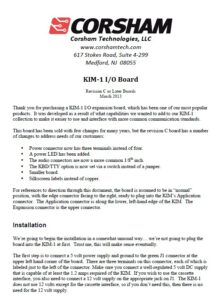 |
Manual KIM-1 I/O board Rev C |

Rev B 2006

